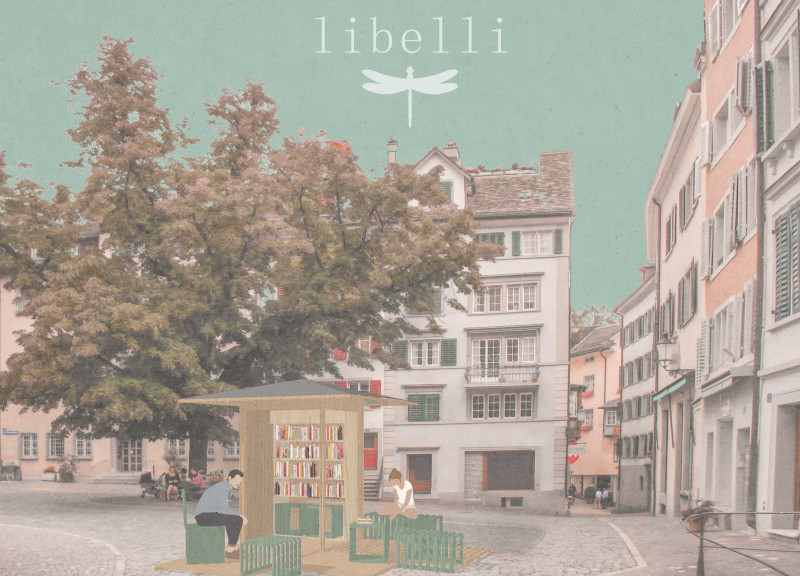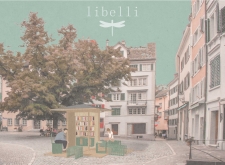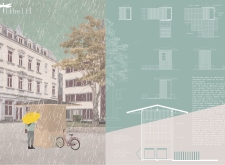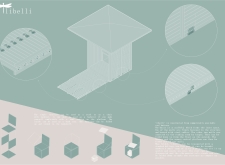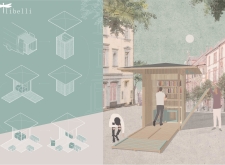5 key facts about this project
In its design, "Libelli" emphasizes transparency and openness, allowing for a seamless connection between the interior space and the surrounding environment. This library, designed to be accessible and inviting, features a central shelving system that encourages browsing and fosters social interaction among users. The combination of flexible seating arrangements and adaptable furniture enhances the versatility of the space, making it suitable for both solitary reading and group discussions.
Unique Design Approaches
One of the defining characteristics of "Libelli" is its modularity, allowing for easy assembly and relocation. This feature not only supports various community events but also emphasizes the importance of adaptive reuse within urban contexts. The structure can be configured to suit different environments, making it a dynamic resource for neighborhoods.
Additionally, the library integrates a folding door system that protects its contents from inclement weather, while also promoting cross-ventilation when conditions are favorable. This design approach ensures the comfort of users, extending the usability of the space throughout different seasons.
Sustainability is also a key aspect of the project. The materials selected, including sustainably sourced wood and durable metal components, reflect a commitment to ecological considerations in architectural design. Such choices contribute to the longevity of the structure and support the community’s engagement with the environment.
Architecture students, professionals, and design enthusiasts are encouraged to explore the architectural plans, sections, and designs that illustrate the detailed elements of "Libelli." In doing so, one can gain deeper insights into the architectural ideas that underline this thoughtful approach to creating a space that nurtures community engagement and literary culture.


